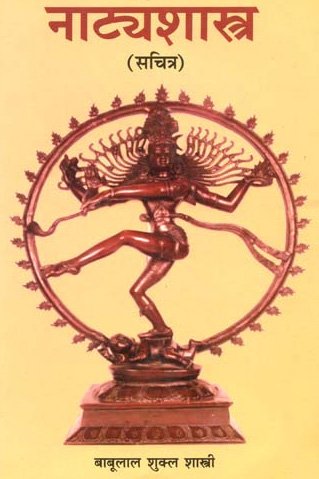Drishyakavya, Dṛśyakāvya, Drishya-kavya: 3 definitions
Introduction:
Drishyakavya means something in Hinduism, Sanskrit. If you want to know the exact meaning, history, etymology or English translation of this term then check out the descriptions on this page. Add your comment or reference to a book if you want to contribute to this summary article.
The Sanskrit term Dṛśyakāvya can be transliterated into English as Drsyakavya or Drishyakavya, using the IAST transliteration scheme (?).
In Hinduism
Kavyashastra (science of poetry)
Source: Shodhganga: Elements of Art and Architecture in the Trtiyakhanda of the Visnudharmottarapurana (kavya)Dṛśyakāvya (दृश्यकाव्य) refers to one of the two types of Kāvya (“poetry”), according to the Sāhityadarpaṇa.—There are two broad divisions of kāvya (poetry) viz., dṛśyakāvya and śravyakāvya.
Dṛśyakāvyas in Sanskrit are mainly divided into two groups, viz.,
- rūpaka and
- uparūpaka.

Kavyashastra (काव्यशास्त्र, kāvyaśāstra) refers to the ancient Indian tradition of poetry (kavya). Canonical literature (shastra) of the includes encyclopedic manuals dealing with prosody, rhetoric and various other guidelines serving to teach the poet how to compose literature.
Languages of India and abroad
Sanskrit dictionary
Source: Cologne Digital Sanskrit Dictionaries: Yates Sanskrit-English DictionaryDṛśyakāvya (दृश्यकाव्य):—[dṛśya-kāvya] (vyaṃ) 1. n. The drama.
Sanskrit, also spelled संस्कृतम् (saṃskṛtam), is an ancient language of India commonly seen as the grandmother of the Indo-European language family (even English!). Closely allied with Prakrit and Pali, Sanskrit is more exhaustive in both grammar and terms and has the most extensive collection of literature in the world, greatly surpassing its sister-languages Greek and Latin.
Kannada-English dictionary
Source: Alar: Kannada-English corpusDṛśyakāvya (ದೃಶ್ಯಕಾವ್ಯ):—[noun] a literary composition meant to be enacted as a drama.
Kannada is a Dravidian language (as opposed to the Indo-European language family) mainly spoken in the southwestern region of India.
See also (Relevant definitions)
Partial matches: Drishya, Kavya.
Full-text (+40): Shravya, Uparupaka, Drishya, Rupaka, Sravy, Kavya, Nataka, Shravyakavya, Natakamelaka, Abhipraya, Anuktasiddhi, Samshaya, Nirukta, Visheshana, Upadishta, Viparyaya, Manoratha, Dishta, Nidarshana, Bhushana.
Relevant text
Search found 17 books and stories containing Drishyakavya, Dṛśyakāvya, Drishya-kavya, Dṛśya-kāvya, Drsyakavya, Drsya-kavya; (plurals include: Drishyakavyas, Dṛśyakāvyas, kavyas, kāvyas, Drsyakavyas). You can also click to the full overview containing English textual excerpts. Below are direct links for the most relevant articles:
Gati in Theory and Practice (by Dr. Sujatha Mohan)
Chapter 3 - Application of gati in Dṛśya-kāvyas
Sanskrit dramas and their performance < [Chapter 3 - Application of gati in Dṛśya-kāvyas]
Hanuman Nataka (critical study) (by Nurima Yeasmin)
Part 2: Varieties of Dṛśyakāvya < [Chapter 1]
Deviation from the Original < [Chapter 3]
Jivanandana of Anandaraya Makhin (Study) (by G. D. Jayalakshmi)
Classical Sanskrit literature < [Chapter 1 - Allegorical Plays in Sanskrit Literature]
The backdrop of the Srikanthacarita and the Mankhakosa (by Dhrubajit Sarma)
Sahitya-kaumudi by Baladeva Vidyabhushana (by Gaurapada Dāsa)
Text 10.276 < [Chapter 10 - Ornaments of Meaning]
Text 4.87 < [Chapter 4 - First-rate Poetry]
Vishnudharmottara Purana (Art and Architecture) (by Bhagyashree Sarma)
1.4. Types of Drama < [Chapter 3 - Drama and Dance]
1.3. Elements of Drama (h): Sentiment (Rasa) < [Chapter 3 - Drama and Dance]